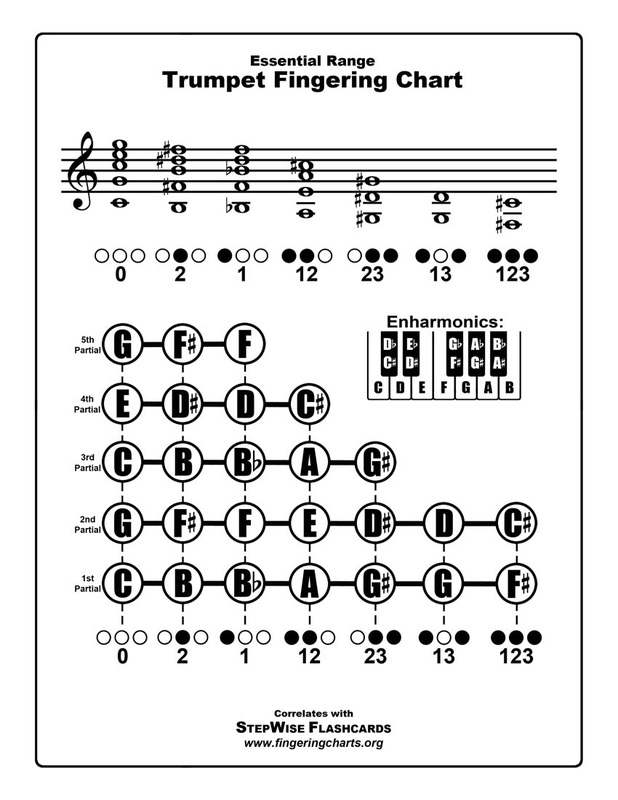
Temperature also affects intonation exponentially on pitches which are already out-of-tune. Fatigue also affects intonation on the trumpet and will affect players differently.Notes above the staff tend to be sharp for younger players as they tend to “squeeze” for these notes, and this pinching makes these notes sharp.These notes tend to be flat because one is relaxing the embouchure so much to reach them. Notes from low C below are so “moveable” that they do not have traditional pitch tendencies and typically slides are not needed.The challenge then also becomes to play these notes with as beautiful a sound as though you are playing through the center of the horn. This involves directing the air stream upwards for flat notes and downwards for sharp notes. This leaves the flat notes and some sharp notes (second line G, top line F#, top of the staff G) that one must now “lip” in tune. The first valve slide should be used for all other sharp notes that use the first valve (low E, second space A, top line F, and A above the staff) the first valve slide will probably only need to be moved slightly for these notes.

The third valve slide should be used for the low C# and D. Use slides to fix sharp notes whenever possible. Here is a summary of the typically out-of-tune notes on the trumpet: Low C#, D To make it easy, here are some other notes that tend to be out of tune on the trumpet, mainly because of the presence of valves, which makes it impossible for the trumpet to be completely in tune.
#Trumpet note c how to#
Refer to fingering charts for how to play the sixth overtone in each overtone series. Therefore, this is technically an alternate fingering, but has become standard. These numbers vary slightly from trumpet to trumpet, but the tendencies are the same, except for a rare exception.īecause it is so out of tune, the sixth overtone is never played open it is played first valve. Sixth overtone (Bb above the staff, played open)

#Trumpet note c series#
In relation to equal temperament, the notes in the overtone series are out of tune as follows: First overtone (low C) I refer below to the open/valveless overtone series as a reference point, but these tuning tendencies apply to valved series as well. The first member of the overtone series that exists on the trumpet is the first overtone, or second harmonic. The fundamental of the overtone series does not exist as a real note on the trumpet.


 0 kommentar(er)
0 kommentar(er)
